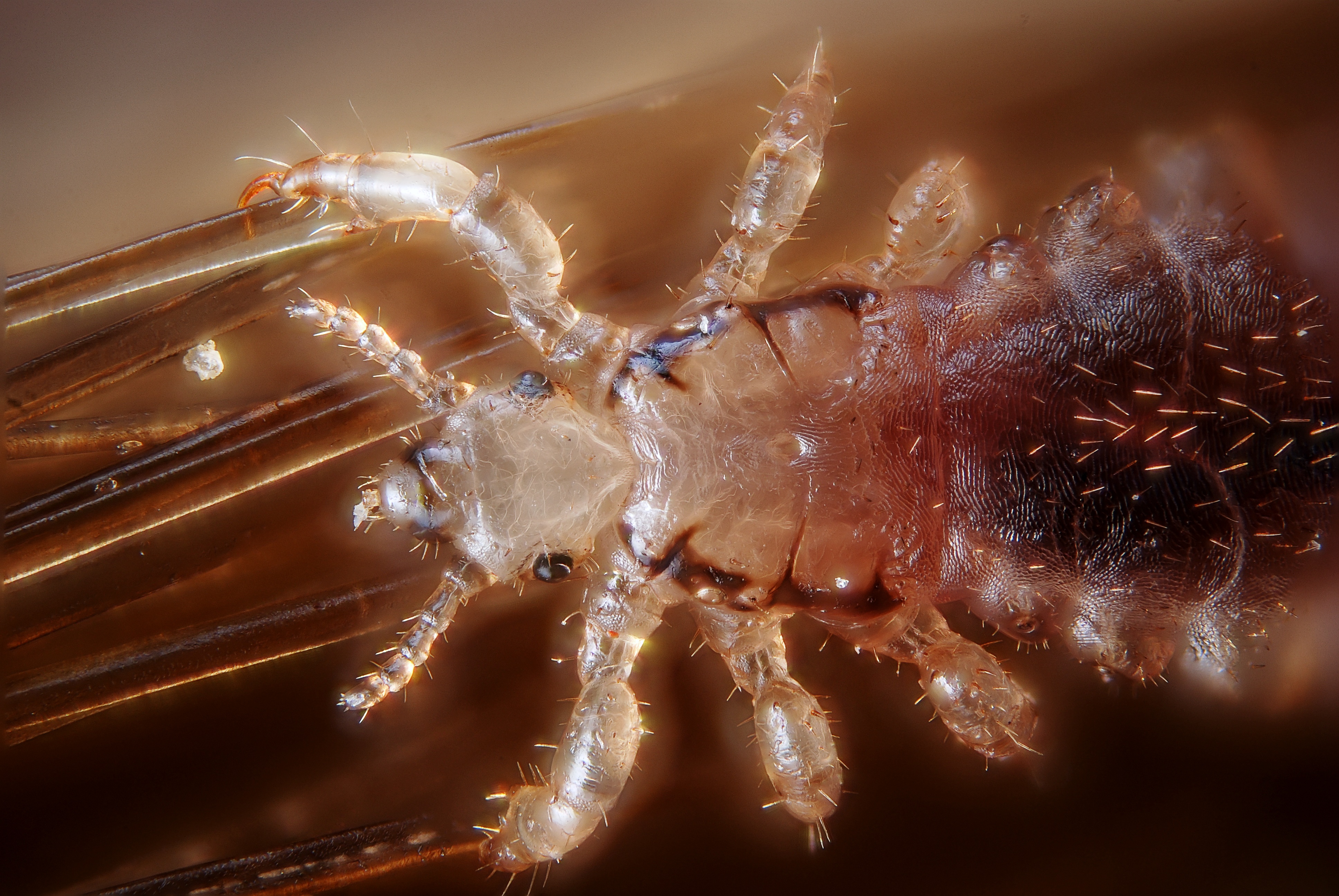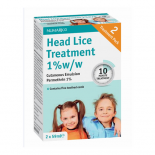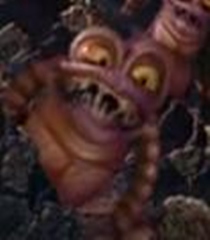Head Lice

Contents:
Head lice are ectoparasites, i.e. creatures parasitizing on the surface of another living organism, feeding and living at it expense. In the specific case, the head lice are parasitic on the hairy parts of the human body. Mostly on head because this is the most hairy part with very thin scalp epidermis, that allows head lice to seamlessly feed on the blood of the host. However, in some cases, head lice can also parasitize on pubic hair (pubic louse). Head lice are classified as insects, small in appearance (0.4 -6 mm), having the flattened body, with increased abdomen, if compared to the head. Piercing and sucking mouthparts determines parasitic way of life. When piercing the skin a certain amount of saliva is produced to prevent clotting. The bite shall be accompanied by skin irritation and intense itching.
An average louse normally lives about 40 days. It’s about 10 days that head lice can survive on without food, i.e. without a host. However, on condition the temperature ambient should be above 10 ° C. A 44° C temperature is fatal to head lice.The danger from head lice and what pediculosis is.
Since the head lice feed on blood, their mouthparts adapted to puncture the upper layers of the skin. Therefore, they can carry a variety of diseases, including dangerous ones such as relapsing fever, typhus etc. Head lice actively begin to develop during natural disasters, when people cannot observe basic rules of hygiene.
The female louse lays up to a few hundred eggs at a time, so-called nits. 10 days later these eggs get transformed into a young generation of head lice developing pediculosis. Unless a properly treated, within one or two months head lice will seize the host up.
Causes Of Head Lice

Such parasites as head lice appear in places with poor sanitary conditions, mainly an infestation of head lice occurs in people who fail to observe basic hygiene rules.
Head lice can spread:
- through the bed linen and underwear;
- through hats and other individual headwear;
- across the water in the basins and other small standing water bodies without proper circulation.
In some cases, head lice lay their eggs in clothes’ seams and folds, where they are difficult to find. Then they move on the body looking for food. In such cases, the most vulnerable are areas of the armpits, groin, back, where clothes fit snugly to the body.
Head lice can thrive under the following conditions:
- in long travels, trips, when there people can’t observe personal hygiene;
- during seasonal works;
- in kindergartens and schools where children have close contacts;
- in other places with large number of people (hospitals, health resorts, trains).
In such places, it is important to pay great importance to preventive measures and disinfecting, as well as to the rodent control. If these rules are observed, the parasites do not thrive and such places become safe for people.
Symptoms Of Head Lice
The nape of the head and the temples are the most affected by the head lice areas. You can observe the following symptoms in these regions:
- severe itching resulting in scratching and damaging the skin tissues;
- the affected skin may fester, forming abscesses and furuncles;
- if the head lice lasts long, the skin thickens and gets pigmented;
- the visual inspection can discover nits, which cling to hair and are approximately 1 cm above the hair root .
Treatment Of Head Lice

Pediculosis can be treated For this purpose you can use specially selected medicines that kill head lice, oppressing their vital functions. In order to get rid of head lice and nits in the hair once and forever, you will have to comb them out for a long time.
In order to achieve better results, the procedure should be carried out several times. After each treatment of hair with special medications, it is necessary to comb out dead parasites.
Pharmacies offer a wide selection of over-the-counter medications for this purpose. These drugs are quite effective in combating head lice. However, such medicines include dangerous substances – pesticides, so it is highly advisable to follow the instruction and observe all the necessary precautions.
You can treat head lice at home without recurring to health specialists, but in some cases, be sure to consult your doctor:
- If the child is under two years (many medications are prohibited at this age, the doctor will help to select the allowed one).
- If the child has asthma or any allergic reactions.
- If nits are found on the eyebrows or eyelashes.
Treating head lice follow these guidelines:
- Do not use more than one medication at once.
- Follow the instructions.
- Don’t use a blow-dryer after applying the medication: some of them contain flammable substances.
- Do not use conditioners or hair masks before applying the medication.
- Avoid hair washing up to two days after the procedure.
- Do not use anti-parasitic drugs for animals.
- Do not use the same medicine more than three times in a row, because by this time it should be clear that it is ineffective in your case. You need to pick up another one.
Prevention Of Pediculosis

The main method of prevention of such an unpleasant disease as pediculosis is the respect for elementary rules of personal hygiene:
- Shampoo regularly (not less than once a week) using quality and suitable for your hair type hair cosmetics.
- Change underwear regularly.
- Change bed linen regularly.
- Comb your hair and take care of it.
- Observe individual rules of hygiene.
- Restrict communication with people who may have head lice because of poor sanitary and hygienic living conditions.
- Do not share personal things, clothes.
- Do not allow children share their brushes, hairpins, hair ties and other personal items with each other.
- Conduct regular preventive check-ups to avoid epidemics.
Video: Head Lice Treatment